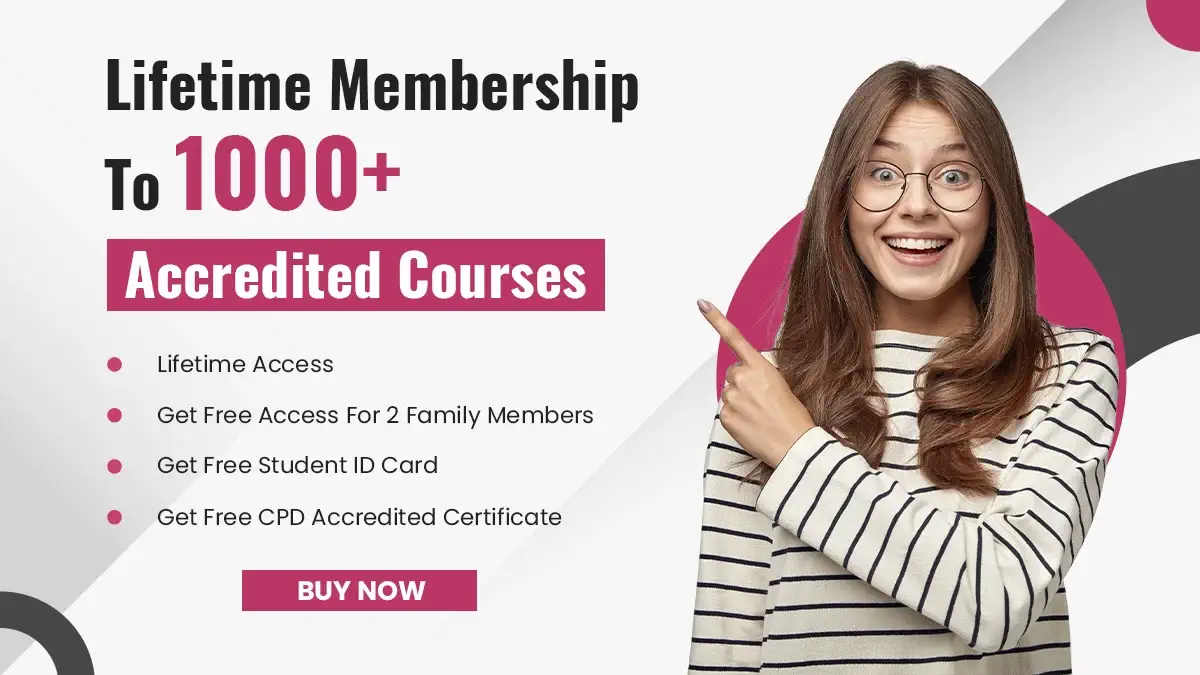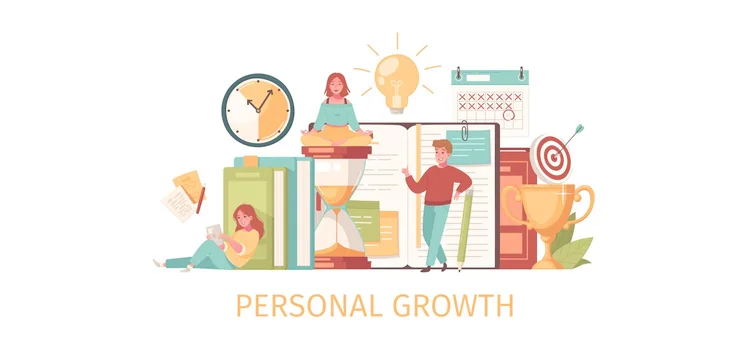Personal Development
How to Write a Personal Development Plan
We often dream of achieving a lot of things in life; degree, money, success, status and whatnot. But do we actually bother to create a proper plan to bring our dreams into reality and work accordingly? I guess most of us do not.
Your success doesn’t come for free. You need to work heart and soul and pave the path to reach your target. A personal development plan can help you to roadmap your ideas and bring them into reality.
Some common aspects included in a personal development plan are the list of strengths and weaknesses, ambitions for the future and key areas for development. If you are curious to know how to write a personal development plan following some simple steps, give a read to this blog.
Table of Content
What is a Personal Development Plan?
A Personal Development Plan (PDP) outlines your plans or ideas for future actions. The plan is prepared to help you achieve your goals. It also gives you a clear vision of where you want to see yourself in the upcoming years.
The personal development plan is commonly prepared in the workplace by the employees so that they can develop strategies to progress in their careers. A good plan not only provides focus but also helps you to make better decisions for your career growth and success.
However, you can use a personal development plan to roadmap things like your education, personal finances etc., alongside your career.
A Personal Development Plan (PDP) outlines your plans or ideas for future actions. The plan is prepared to help you achieve your goals. It also gives you a clear vision of where you want to see yourself in the upcoming years.
The personal development plan is commonly prepared in the workplace by the employees so that they can develop strategies to progress in their careers. A good plan not only provides focus but also helps you to make better decisions for your career growth and success.
However, you can use a personal development plan to roadmap things like your education, personal finances etc., alongside your career.
“The swiftest way to triple your success is to double your investment in personal development.”
– Robin Sharma
Why should you make a Personal Development Plan?
You might be thinking, why do you need a personal development plan in the first place? The answer is, the different stages of the PDP cycle would give you several valuable insights. These insights would further provide you with greater clarity on what your goals and aspirations are and how to achieve them. This self-analysis contributes to your decision making process while applying for a job or choosing the right education stream for you.
A PDP also helps you to identify your strengths and weaknesses. As such, you can work on your existing skills and capabilities to understand where you stand at the time of the assessment and let you reflect on your next steps.
 Are you looking for Personal Development courses?
Are you looking for Personal Development courses?
How to Create a Personal Development Plan?
A personal plan is something that you would create according to your preference. However, if you follow some guidelines, it would be easier for you to design the plan.
Consider the following steps while preparing your personal development plan.
Set your Goals
Kickstart your planning process by listing your goals according to your priority. Try to structure your goals in a way that makes them easy to achieve. You can set short-term or long term goals according to your convenience.
While outlining your goals, think of what you have achieved so far and whether you are satisfied with your current position or not; which task you find easy and which one difficult. Once you have answers to these questions, ask yourself further where you want to see yourself in the next three or five years.
All these questions and brainstorming would help you to have a clear vision of your goals.

Personal Development Course Online – Masterclass
- Accredited Courses
- Tutor Support Included
- 3 Installment Plan at checkout
- 14 Days Money Back Guarantee
Prioritise the Goals
After preparing your goals, the next thing you can do after preparing your goals is to prioritise the goals and plan what you can do now and what should be done in the future.
It would be difficult for anyone to accomplish everything at once. So, prioritise your goals according to the time and resources available, either in your personal life or at work.
A good way of reaching your goals can be splitting up your goals. Instead of jumping straight to the target, take baby steps to achieve the bigger goals. For instance, if you are thinking of having a PhD abroad, then breakdown the steps like these:
- Complete your bachelor’s degree
- Research about the PhD application process
- Find a suitable university
- Send mails to professors and look for funding
- Apply for your PhD
Have Deadlines
Now that you know your goals and priority, set deadlines so that your plans work out. By having deadlines, you can decide when and how you want to reach your goals.
An individual’s goals, milestones and objectives can vary, so as their time consideration. However, the following can be examples of how people usually set deadlines to reach their goals.
- I want to be a CEO by 35
- I want to have a PhD by 30
- I want to be the Head of the Department by 40s
Recognise the Threats and Limitations
While creating a plan, remember that there would be threats, limitations and challenges that can hinder your development. For example, you can have personal issues, family emergencies, lack of motivation and so on. So, be positive while you plan for your achievements, but also be aware of the unwanted inconvenience that can delay your progress.
Take Actions
Once you identify the risks and challenges that can slow down your progress, prepare yourself to create an action plan. In this phase, you need to figure out how to achieve and fulfil your dreams. Take the necessary steps to prevent any threat that might come your way.
Check your Progress
Include a progress tab in your development plan so that you can tick off your accomplishments and keep a record of your progress. It will help you to stay motivated to achieve your future goals.
Your Goals should be SMART
Since by setting goals, you are providing yourself with a target to aim for, try producing SMART goals to help focus your efforts. SMART is an acronym that stands for Specific, Measurable, Achievable, Relevant, and Time-bound. Therefore, a SMART goal incorporates all these criteria to increase the chances of achieving your goal.
S = Specific
Be clear and specific while setting your goal. This will help you to understand the steps necessary to achieve it.
Example: I want to be a professor in a university after completing a PhD.
M = Measurable
Your goals should be measurable so that you can track your progress and say that you have achieved it. This will help you stay motivated and enthusiastically work towards achieving your goals.
Example: I will apply to at least three universities for the post of professor.
A = Achievable
Your goal should be achievable and realistic so that it becomes possible for you to reach it within a specific timeframe. Before you start working toward achieving your goal, check whether it is practically achievable or whether some additional steps are required to obtain the goal.
Example- I will complete my PhD within four years to apply for a professorship at university.
R = Relevant
When setting goals, ask yourself: Is the goal relevant and within reach? If a goal doesn’t lead towards broader objectives, you should rethink it.
Example: To achieve my goal of becoming a professor in a university, I will complete my PhD within four years so that I can apply to at least three universities for the post of professor.
T = Timeline
There should be an end date to accomplish your goals so that you stay motivated. You do not have forever to reach your goals. If things do not work out within the timeframe, take time to consider why.
Example: To achieve my goal of becoming a professor in a university, I will apply to at least three universities for the post of professor this week.
Develop Strategies to reach your Goals
You need to develop strategies to reach your goals step by step. Your strategies define the variety of approaches you want to make throughout the process of acquiring the target. For example, if you want to be a teacher, you can first aim to be a teaching assistant to gather the necessary knowledge and experience.
You can consider the following options while developing your strategies:
- If you desire a career change, research about required education and certification to start a new career.
- Advance your skillset by looking for opportunities in your current job. Show interest in more responsibilities to your older people.
- If you need any guidance, reach out to your mentor. Your mentor can be anyone like your colleague, a senior employee or your teacher.
Adopt Resources for Growth
If you are creating your development plan for professional growth, you must look for available resources. Resources are workshops or networking opportunities holding the potential to help you in the progress of your career.
For example, you can opt for a certification course if you want to apply for a particular position or want a promotion. The certification would prove that you have the required skillset and enthusiasm to work in a specific field.
You can also attend seminars or webinars where public speakers or orators give presentations on specific topics. All these would be a valuable asset to your personal gain list.
Personal Development Plan Example
- Goal: Want to be promoted to the account manager role
- Prioritise your goal:
- Will learn about forecasting and reporting
- Will learn about advertising
- Limitations: Need a more in-depth knowledge about the agency’s resource allocation
- Actions:
- Find a mentor
- Enrol in an advertising course
- Progress: Scheduled a session with a financial controller to learn forecasting and reporting
- Deadline:
- Find a mentor within a week
- Complete the necessary courses within a month
- Ask for promotion within six months
Personal Development Plan Template
You can prepare your development plan according to your preference. The following template is provided to give you an idea of how a PDP template can be.
Benefits of a Personal Development Plan
While there can be many benefits of having a personal development plan, some of the notable benefits are:
- Provides clarity: Creating a PDP is strategically documenting your dreams so that you do not lose track while trying to fulfil them. A clear vision of what you want from life is essential so that you do not stumble blindly in the dark.
- Boosts your motivation: A personal development plan allows you to act more productively by identifying your strengths and weaknesses. While you need to overcome your weaknesses, your positive outcomes and achievements can boost your confidence and motivate you to achieve more.
- Helps to hone your skills: While creating a personal development plan, you can understand the areas that need improvement. With that, you can identify which skills you need to focus on, whether to improve existing ones or acquire new skills to achieve your goals.
- Self-esteem: You get to know about yourself when working on your personal development plan. As you look inside, you know what makes you vulnerable. As such, you can work on any areas where your self-esteem may be lacking.
Some common Pitfalls while creating a PDP
Creating a proper personal development plan that would serve your purpose can be a bit challenging. That is why PDPs often have some pitfalls,
which are-
- Not addressing the majority of the weaknesses while doing strengths and weakness analysis
- If your limitations and action plan are contradictory. For example, if you include lots of paid training courses in your plan but at the same time identified budget issues as your limitations.
- When goals are not specific; rather too vague. For example, if you write “I want to gain various skills” without particularly mentioning the skills you want to achieve.
- Not including ways to measure or test the progress you make from the action.
- Not providing any timeline. You should complete your actions within a particular time frame in order to reflect on the next step.
Conclusion
After achieving each goal, put a tick in the box of your PDP, and see how satisfying it is! Having one personal development plan helps you to work on improving yourself and spending more time on constructive activities. Without a plan, you might forget to track your progress and you would fall into the helpless habit of being inactive.
Learn how to boost your efficiency and productivity by enrolling in the Personal Development courses of Lead Academy.
What to Read Next:
- What are the Key Features of Effective Communication? 7C’s of Communication
- What are Interpersonal Skills? 19 Examples of Interpersonal Skills
- Examples of Transferable Skills that Employers are Looking for
- What is Distributed Leadership? Importance of Distributed Leadership
- 20 Jobs to Consider if you have Good Communication Skills – Details and Overview




 Are you looking for Personal Development courses?
Are you looking for Personal Development courses? 









